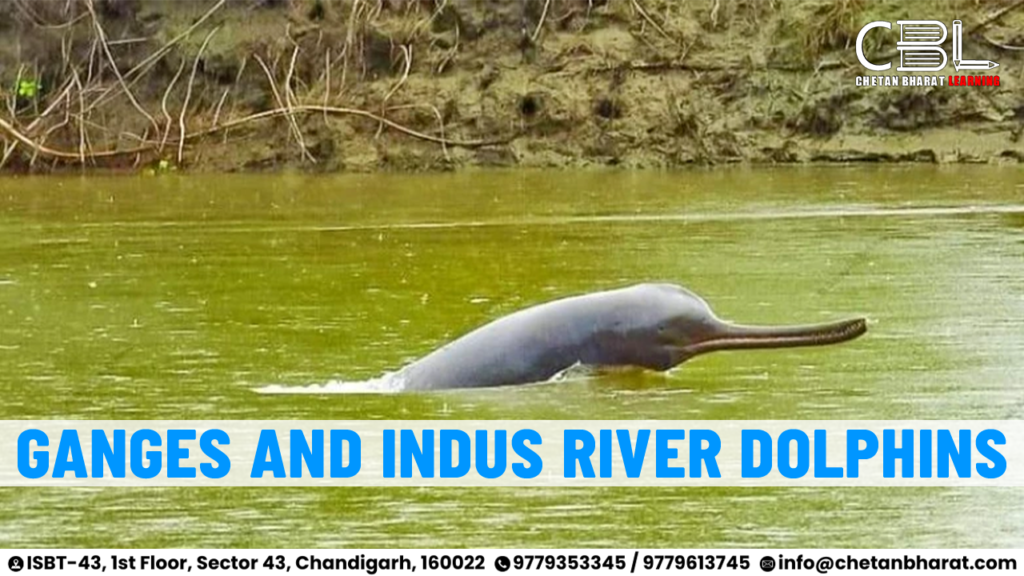
Important for UPSC, State PCS
Prelims: Ganges and Indus River Dolphins
Mains: General Studies Paper 3, Environment . Ganges and Indus River Dolphins .
Context
- Recently a 8,000-kilometer aquatic survey was carried out by the Wildlife Institute of India (WII) for the assessment of dolphin populations.
Ganges River Dolphin (Platanista Gangetica)
- Characteristics: Ganges River Dolphin is essentially blind and hunts by emitting ultrasonic sounds (echolocation) waves that bounce off of fish and other prey.
- Because of the sound it produces when breathing, the animal is popularly referred to as Susu.
- Distribution: It is distributed in Ganges and Brahmaputra river basins of India, Nepal and Bangladesh. It can only live in freshwater.
- Threat: Ganges river dolphin is facing severe threats from water development projects, Pollution, hunting and death due to accidental catches in fishing gear.
- Conservation status: The Ganges river dolphin is protected under
- Schedule 1 of the Indian Wildlife (Protection) Act 1972,
- Appendix 1 of the Convention on International Trade in Endangered Species (CITES) and
- Appendix 1 of the Convention on Migratory Species (CMS).
- IUCN status: Endangered
- National and State Symbol: The Ganges river dolphin was designated as a national aquatic species in 2009 and as the state aquatic animal of Assam.
Indus River Dolphin ( Platanista minor)
- Characteristics: The Indus River Dolphin is also functionally blind and relies on echolocation to navigate and find prey.
- It is commonly referred to as Bhulan in local languages.
- Distribution: The Indus River Dolphin is found in the Indus River system in Pakistan and a small population is present in the Beas River in India.
- Threat: Water diversion projects have significantly reduced its habitat range, confining populations to isolated sections of the river.
- Conservation Status: Protected under Schedule I of the Indian Wildlife (Protection) Act 1972 in India.
- Appendix I of the Convention on International Trade in Endangered Species (CITES).
- Appendix I of the Convention on Migratory Species (CMS).
- IUCN status: Endangered
- State Symbol: The Indus river dolphin is the state aquatic animal of Punjab.
CBL Practice Questions for Prelims
The main reason for the decline in populations of Ganges and Indus River dolphins is attributed to:
A) Natural predation
B) Industrial pollution and habitat fragmentation
C) Climate change
D) Illegal hunting for meat
Answer: B) Industrial pollution and habitat fragmentation
CBL Mains Practice Question
Evaluate the conservation efforts being undertaken for the protection of Ganges and Indus River dolphins. What measures have been effective, and what challenges remain?




Leave a Reply
You must be logged in to post a comment.